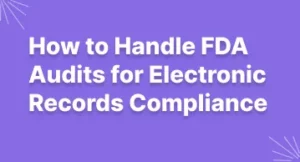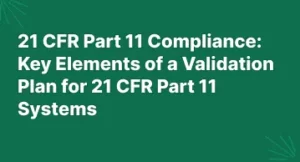eSign Audit Trails: Your Digital Signature Safety Net
Introduction
In today’s digitally-driven world, electronic signatures, commonly known as eSignatures, have transformed the way we sign and exchange documents. These eSignatures offer speed, convenience, and enhanced security compared to traditional paper-based signatures. However, as the use of eSignatures continues to grow, it becomes essential to maintain a comprehensive audit trail for these digital signatures. This blog delves into the realm of eSign audit trails, exploring their significance, the elements that constitute them, the benefits they offer, legal and regulatory requirements, and the steps to create a robust eSign audit trail.
What is an eSign Audit Trail?
An eSign audit trail serves as a digital record that meticulously documents the events and actions associated with an electronic signature. It acts as a transparent and immutable history of the signature process, including all interactions, verifications, and timestamps. The audit trail typically encompasses metadata, timestamps and date stamps, user identification and authentication data, document details, and specifics related to the signature process.
Components of an eSign Audit Trail
- Metadata: Metadata encompasses information regarding the document, the signatories, and the eSignature platform used…
- Timestamps and Date Stamps: Accurate timestamps and date stamps are crucial for tracking when each step of the signing process took place…
- User Identification and Authentication: The audit trail should include details about the individual initiating the signature process, the identity of the signers…
- Document Details: Information about the document being signed, such as the document’s title, version, and any attachments, should be recorded in the audit trail…
- Signature Process Details: This component outlines the step-by-step progression of obtaining eSignatures, including the entity initiating the process, the signers…
Benefits of an eSign Audit Trail
- Transparency and Accountability: Audit trails provide a transparent record of the signing process, holding all parties involved accountable for their actions…
- Legal Protection: In the event of a dispute or legal challenge, an audit trail serves as valuable evidence to authenticate the validity of a signature…
- Compliance with Industry Regulations: Many industries maintain specific regulations concerning the use of electronic signatures…
- Security and Fraud Prevention: Audit trails act as a safeguard, helping to identify and mitigate unauthorized or fraudulent activities related to eSignatures…
- Enhanced Customer Trust: Customers and clients are more likely to have trust in a signing process when they are aware that their signatures are being recorded and secured…
Legal and Regulatory Requirements
The utilization of electronic signatures is subject to various laws and regulations worldwide…
How to Create an eSign Audit Trail
- Choose a Reliable eSignature Solution: Select a reputable eSignature solution that aligns with your needs…
- Configure and Customize the Audit Trail Settings: Once you have chosen an eSignature solution, configure the audit trail settings to match your specific business requirements…
- Ensure User Authentication and Authorization: Implement robust user authentication and authorization protocols to verify the identities of signers…
- Set Up Document Tracking: Establish a system that tracks the document’s journey from its creation to signing and archiving…
- Record All Events and Actions: Capture all events and actions linked to the eSignature process…
- Secure Storage and Access Control: The final step involves securely storing the audit trail and implementing access control measures…
Best Practices for Managing eSign Audit Trails
- Regularly Review and Audit the Audit Trail: Periodically review and audit the audit trail to identify and rectify any anomalies or issues…
- Data Retention Policies and Archiving: Establish clear data retention policies that determine how long audit trail data should be kept and archived…
- Integrating eSign Audit Trails into Existing Systems: Integrate eSign audit trails with your existing document management and storage systems…
- Training and Education for Users: Educate your staff and users about the importance of eSign audit trails and how to use them effectively…
Challenges and Considerations
- Potential Challenges in Implementation: Implementing and maintaining audit trails can be intricate, and organizations may encounter challenges related to technical integration and user adoption…
- Data Privacy and Security Concerns: The audit trail contains sensitive data, making security a top priority…
- Scalability and Resource Requirements: As your business expands, the volume of documents and signatures may increase…
Future Trends in eSign Audit Trails
- Blockchain and Distributed Ledger Technology: The use of blockchain and distributed ledger technology for audit trails is gaining traction…
- Artificial Intelligence and Machine Learning for Audit Analysis: AI and machine learning are being employed to analyze audit trails in real-time…
- Regulatory Changes and Their Impact: As regulations pertaining to electronic signatures and audit trails evolve…
Conclusion
eSign audit trails are an essential component of the modern business landscape…
Ready to experience the power of a robust eSign audit trail and elevate your digital signature processes to the next level? Take the first step towards secure and compliant electronic signatures by booking a free demo or trying out MSB Docs today. See firsthand how MSB Docs can be your digital signature safety net and bring transparency, trustworthiness, and efficiency to your signing processes.
FAQs
1. What happens if an eSign audit trail is tampered with or altered?
If an eSign audit trail is tampered with or altered, it could compromise the integrity of the signature process. To prevent this, audit trails are often secured using encryption and access controls. Additionally, many eSignature solutions have built-in mechanisms to detect and flag any unauthorized changes to the audit trail, helping maintain its trustworthiness.
2. Are eSign audit trails always required for legal compliance?
The legal requirements for eSign audit trails may vary by jurisdiction and the nature of the documents being signed. While they are not always mandatory, having a robust audit trail is considered best practice and can provide valuable evidence in case of legal disputes or challenges. It’s advisable to check specific regulations and legal requirements in your region.
3. Can eSign audit trails be used for internal audits and process improvement?
Yes, eSign audit trails are not only beneficial for external purposes but also for internal audits and process improvement. They offer insights into the efficiency of your signing processes, helping you identify bottlenecks, errors, or areas that need improvement. Analyzing audit trail data can enhance the overall effectiveness of your document signing workflows.
4. How long should eSign audit trail data be retained?
The retention period for eSign audit trail data can vary based on industry regulations and legal requirements. It’s important to establish clear data retention policies that align with these regulations. In some cases, audit trail data may need to be retained for several years to ensure compliance.
5. Are there third-party services that specialize in auditing eSign audit trails?
Yes, there are third-party services and auditing firms that specialize in reviewing and validating eSign audit trails for organizations. These services can help ensure that your audit trails meet compliance requirements and are in line with best practices. They can also assist in resolving any issues or discrepancies in the audit trail data.





